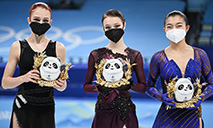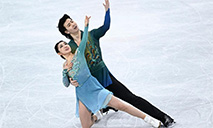RCEP, bilateral FTAs key to attract investments to Cambodia in post-pandemic era: official
PHNOM PENH, Feb. 18 (Xinhua) -- The Regional Comprehensive Economic Partnership (RCEP) free trade pact and bilateral free trade agreements (FTAs) are one of the key factors attracting foreign direct investments to Cambodia in the post-COVID-19 era, a senior official said here on Friday.
Cambodia has bilateral FTAs with China and South Korea as well as the RCEP free trade agreement, and "these pacts are a factor for the attraction of investments to our country," Economy and Finance Ministry's permanent secretary of state Vongsey Vissoth said in a press conference on the country's macroeconomic management for 2022.
RCEP is a mega trade pact between 10 ASEAN member states and the bloc's five major trade partners, namely China, Japan, South Korea, Australia and New Zealand.
RCEP and the Cambodia-China FTA entered into force on Jan. 1, 2022, while the FTA between Cambodia and South Korea is expected to take effect in the near future.
Vissoth said that these free trade pacts are crucial to boost Cambodia's economic growth in the long run.
Cambodia's national economy is forecast to grow by 5.6 percent in 2022, up from 3 percent in 2021, he said, adding that the growth is expected at a higher rate of 6.5 percent in 2023 and up to 7 percent in 2024.
The economy is mainly supported by garment, footwear and travel goods exports, tourism, real estate and construction, and agriculture. Vissoth said all these sectors will enjoy positive growth this year.
He said the government had prepared a stimulus package of more than 1 billion U.S. dollars for 2022 to boost the economy and to mitigate the impacts caused by the pandemic.
Meanwhile, the official noted that Cambodia's high vaccination rates have allowed the country to fully resume its socio-economic activities in all areas since November last year.
According to the health ministry, the southeast Asian nation has so far administered at least one dose of COVID-19 vaccines to 14.39 million people, or 89.9 percent of its 16 million population.
Of them, 13.8 million, or 86.3 percent, have been fully vaccinated with two required shots, 6.23 million, or 38.9 percent, have taken a third dose or booster shot, and 739,201, or 4.6 percent, have got a fourth dose, the ministry said.
Most of the vaccines used in the country's immunization drive are China's Sinovac and Sinopharm.
Photos
 In pics: Battle of the Flowers parade of 2022 Nice Carnival
In pics: Battle of the Flowers parade of 2022 Nice Carnival How technology helps Chinese athletes make breakthroughs at Beijing Winter Olympics
How technology helps Chinese athletes make breakthroughs at Beijing Winter Olympics Shcherbakova wins as ROC duo finish 1-2 in women's singles figure skating at Beijing 2022
Shcherbakova wins as ROC duo finish 1-2 in women's singles figure skating at Beijing 2022 French duo crowned, Chinese ice dancers make history at Beijing 2022
French duo crowned, Chinese ice dancers make history at Beijing 2022
Related Stories
Copyright © 2022 People's Daily Online. All Rights Reserved.






